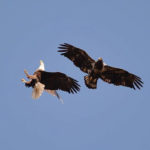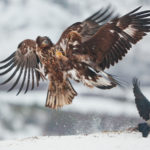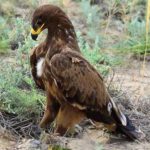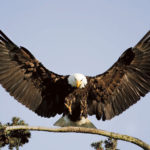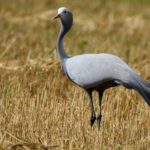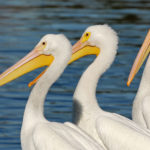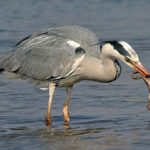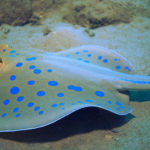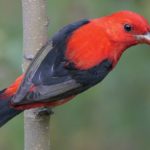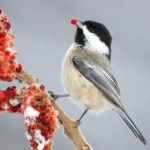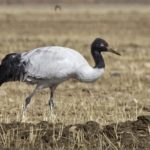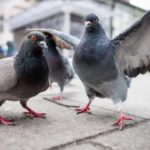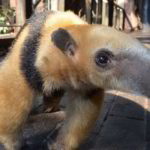Eagles
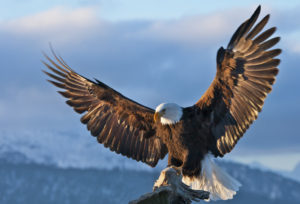 Eagles from time immemorial were considered kings of the feathered kingdom, behind them the status of the strongest, brave and noble inhabitants of the skies was established. The world fauna counts about four dozen species of these birds, allotted to several genera in the Yastrebiny family. Among the predatory birds, their closest relatives are eagles, harpies and buzzards.
Eagles from time immemorial were considered kings of the feathered kingdom, behind them the status of the strongest, brave and noble inhabitants of the skies was established. The world fauna counts about four dozen species of these birds, allotted to several genera in the Yastrebiny family. Among the predatory birds, their closest relatives are eagles, harpies and buzzards.
All eagles are birds of medium and large size. Only the smallest species – the steppe eagle and the eagle-dwarf – weigh, respectively, 1.6-2 and 0.5-1 kg, the mass of the other species is 3-5 kg, the wingspan reaches 2 m, and females at 25 -30% larger than males. When looking at the eagle, a powerful hooked beak attracts attention, a well-developed neck, huge wings that, even when folded, protrude beyond the chest line, and comparatively long legs with strong fingers and curved claws. All this exposes them to dexterous predators, extracting food exclusively by active hunting and not scavenging.
By the type of coloring of all eagles can be divided into two groups. Most of the species are colored monotonously in brown, black, rusty color with individual pestrinami on the wings. Some species (hawk, war, crowned eagles) have a contrasting color – the top and head are dark, the bottom is light. The abdomen and wings are dotted with specks or stripes. In addition, African crested and comb eagles have on their heads an ornament in the form of a bundle of long feathers.
Species from the genus of real eagles inhabit mostly temperate and subtropical zones of Eurasia – from Scotland in the northwest to Kazakhstan, Mongolia and India in the southeast. The tailed eagle lives in Australia, on the islands of Tasmania and New Guinea. All these birds prefer to settle in open landscapes: in steppes, semi-deserts and mountains bordering on treeless plains. Crested, crowned, comb-shaped eagles live in Africa and prefer sparse forests and shrub savannas.
Live eagles settled in pairs, hunted most often alone. In search of prey they spend hours hovering at enormous height like vultures or condors, although they are inferior in size to the last. But the lightness and grace of the eagles are deceptive, at the right moment they are rapidly declining, pulling their paws forward and grabbing the victim, stunning it with a beak. Strong wings allow them to easily maneuver at the surface of the earth and the edges of steep cliffs, so saving a bird from a feathered predator is not easy for a potential victim. In addition to maneuverability, the inordinate power of these birds attracts attention. Unlike other predatory birds, eagles often attack animals much heavier than themselves: foxes, wolves, roe deer, gazelle, antelope. And the catching of hares, marmots, ground squirrels, small monkeys and birds is not difficult for them at all.
The eagles, when caught, are eaten, as a rule, on the spot, only the food for the chicks is taken to the nest. If the victim several birds attacked together, then when eating it, there are often fights. After the meal, birds drink a lot and carefully clean the plumage. If the eagle does not manage to catch a large enough victim for a long time, it can condescend to feeding on carrion or catching insects.
The voice of these birds sounds thin and piercing. Most often they make cries like “kli-kli-kli”, less often – deaf sounds. In relation to neighbors, eagles are intolerant and, seeing the competitor, enter into a fight with him in the air. Huge birds intimidate each other, imitating the attack, and if that does not help, then claw claws and spin in free fall. Such a dance male and female perform in the mating season.
Eagles multiply once a year, in southern regions they lay eggs in winter, in northern regions – in the first half of spring. Their nests are placed on the birds at the tops of tall trees, ledges of rocks, less often on the ground. Eagles often capture the old nests of crows, falcons, hawks and build them up to the desired height. The nest of steam is used for many years in a row, annually putting in it fresh green branches. Over time, it looks like a huge heap.

